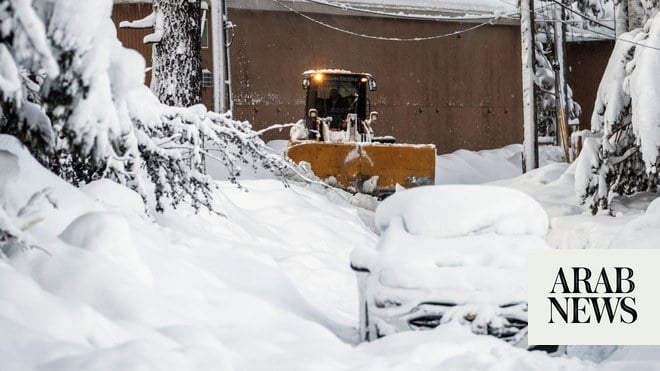
The entire island of Puerto Rico was without power as a category 1 hurricane bringing heavy rains and dangerous winds was expected to make landfall on Sunday evening, with the island bracing for “life-threatening” flash floods and landslides.
Hurricane Fiona, which was located about 25km (40 miles) off the coast of the Caribbean island at midday on Sunday, threatens to cause widespread flooding and damage to infrastructure in Puerto Rico and the Dominican Republic as it continues to strengthen and dump torrential rain over the next 24 hours.
Lights went out across the island just after 1pm, leaving only those households and businesses with rooftop solar or functioning generators with power.
The health minister confirmed that a major cancer hospital in the capital San Juan was without power after its backup generator failed. An emergency shelter in Sabana Grande in the south-west, where dozens of locals including some infirm residents had sought refuge, is alsso currently without power after its generator failed, according to Ruth Santiago, an environmental lawyer and campaigner for Queremos Sol, a grassroots movement to transition the island away from a centralized energy grid to rooftop solar.
“The only thing that can save us this time is that Fiona is not as strong as Maria because so little has changed, the whole transmission system is down. The Fema money [federal funds to rebuild the energy system after Maria] should have been spent on rooftop solar… if people die the Biden government will have blood on its hands,” said Santiago from Salinas, a town being battered by gusty winds and torrential rains.
Ports are closed and flights out of the main international airport have been canceled. Flash floods, landslides and high winds have already damaged crops in the south of the island, with more dangerous conditions forecast through Monday.
Puerto Rico is a tropical archipelago and US territory located a thousand miles or so south-east of Miami. The main island is mostly mountains surrounded by narrow coastal plains where the majority of the 3 million habitants reside in towns and cities. It’s one of the most vulnerable places on the planet to extreme weather caused by the climate crisis.
It was devastated by Hurricane Maria in 2017, when the delays in federal government help contributed to the high death toll and slow recovery.
President Joe Biden has already declared a federal disaster for Puerto Rico, mobilizing the delivery of aid to the island.
Parts of Puerto Rico could see up to 25 inches of rain today, which the National Hurricane Centre (NHC) warned “pose an extreme life-threatening flooding risk, especially over southern and eastern portions of the island”.
Land and mudslides are likely on higher ground, while storm surges could cause flooding of 1-3 ft above normally dry ground along the eastern and southern coast of the main island and the smaller ones of Vieques and Culebra, according to the NHC, which is part of the national weather service (NWS).
Fiona is likely to further damage Puerto Rico’s fragile centralised electricity grid, which Hurricane Maria exposed and exacerbated, and continues to fail residents with frequent power outages and extortionate bills.
It heads to US territory after battering several eastern Caribbean islands, with one death reported in the French territory of Guadeloupe late last week. Fiona was upgraded from a tropical storm to a hurricane on Sunday morning, as it gathered intensity while heading west towards Puerto Rico and neighbouring Dominican Republic.
Meanwhile, almost 5,000 miles away in Alaska, residents were waking up to a trail of destruction caused by a historic storm that impacted almost 1,000 miles of Alaska’s coastline over the course of Friday and Saturday.
Governor Mike Dunleavy issued a disaster declaration on Saturday after the powerful storm, the remnant of Typhoon Merbok, forced hundreds of people to evacuate their homes as seawater surged as high as 50ft in some areas, with heavy rainfall and wind gusts up to 90mph. No loss of life has been reported.
On Sunday, Dunleavy said the state needed to move quickly to assess and repair damage to infrastructure like roads and bridges, as freezing Arctic temperatures are likely to hamper efforts within a few weeks.












